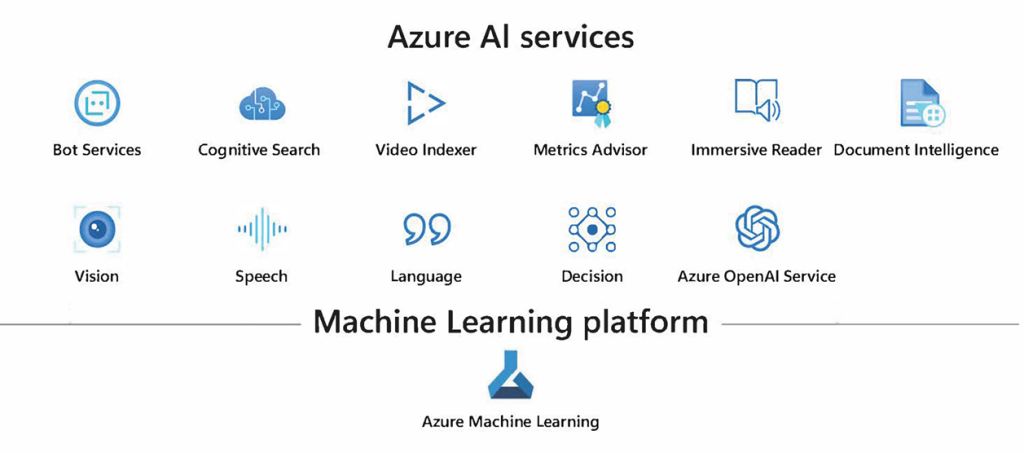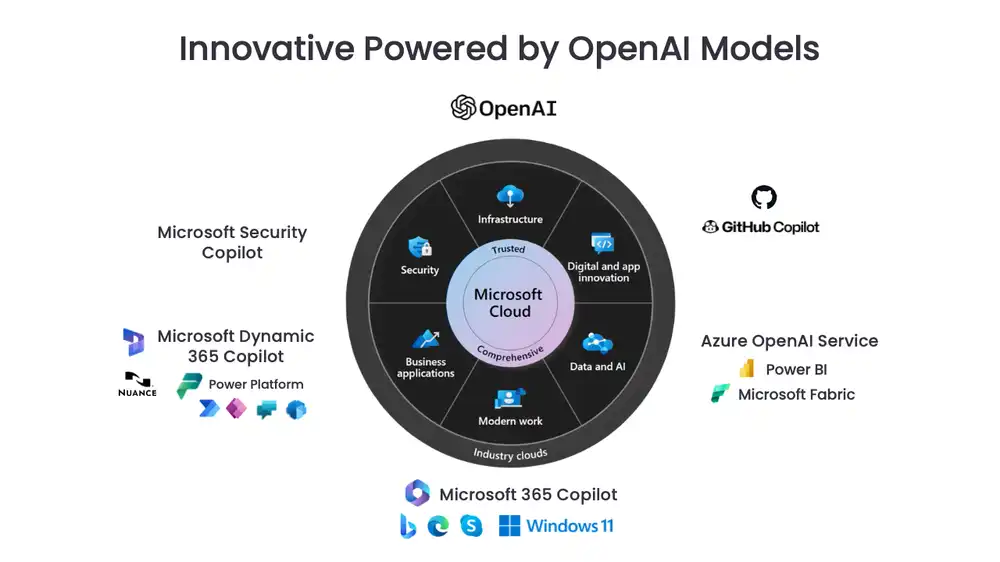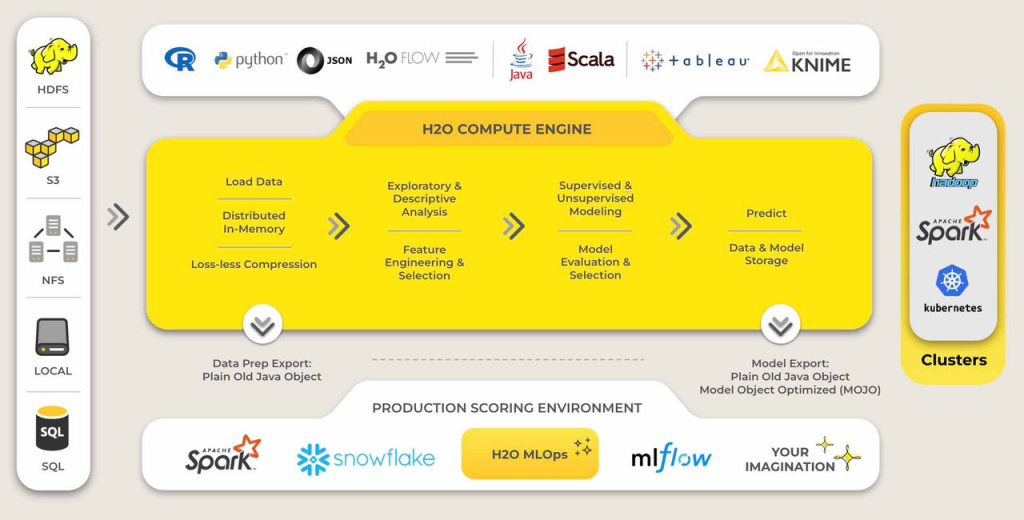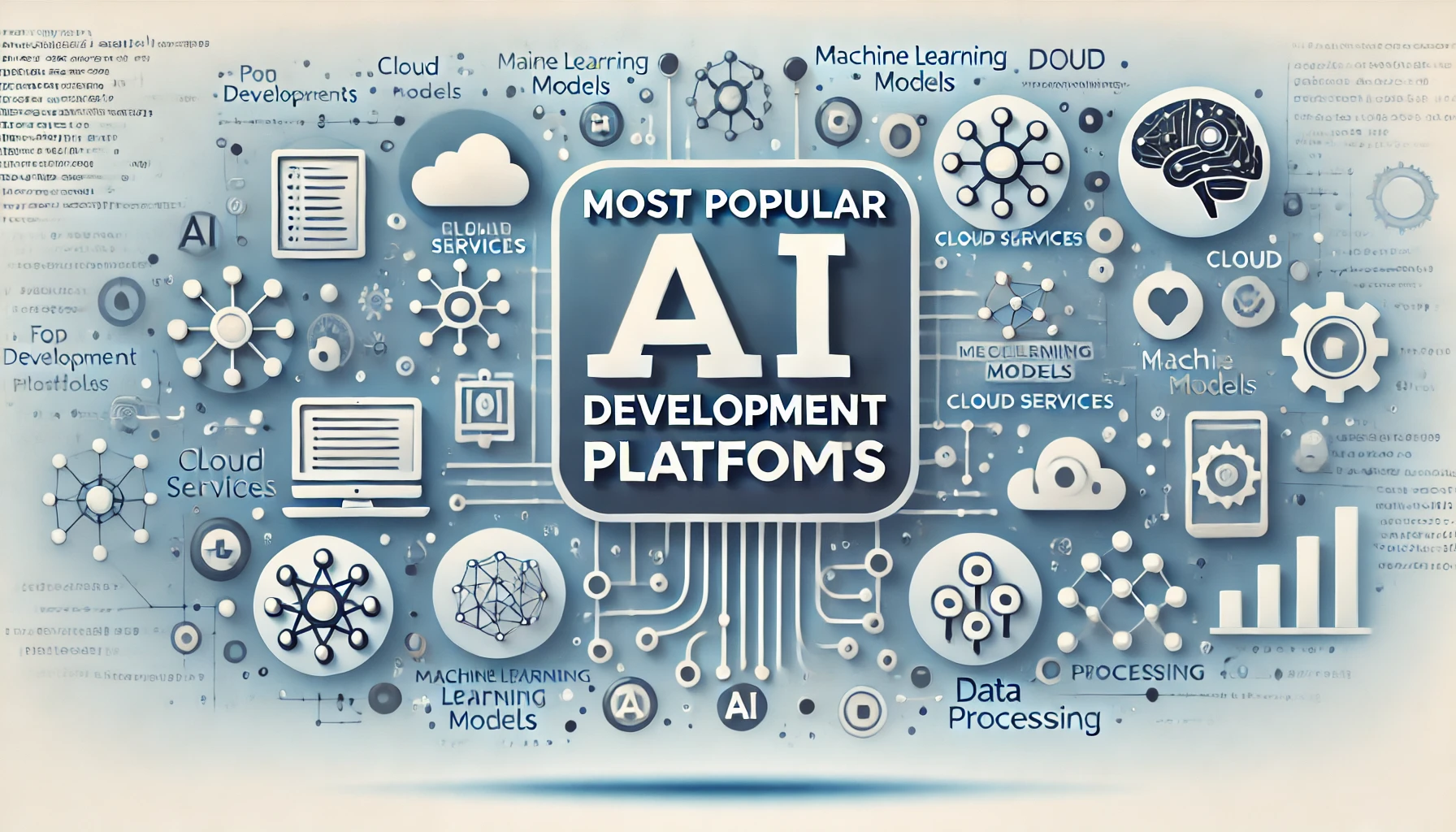In today’s rapidly advancing digital landscape, artificial intelligence (AI) has emerged as a transformative force across industries, reshaping everything from healthcare and finance to retail and manufacturing. As organizations recognize the strategic value of AI for optimizing operations, improving customer experiences, and driving innovation, the demand for sophisticated AI development tools continues to surge. However, building effective AI solutions isn’t as simple as implementing a traditional software application. It requires a unique combination of resources, including specialized algorithms, vast computational power, and access to high-quality, extensive datasets.
This is where AI development platforms play a pivotal role. These platforms are designed to equip developers, data scientists, and enterprises with the essential tools to design, train, deploy, and manage AI models—enabling them to streamline complex processes and optimize their AI workflows. From powerful cloud-based services to open-source frameworks, AI development platforms cater to a wide range of needs, making them indispensable for any organization aiming to leverage AI.
AI development platforms provide several key functionalities:
- Model Development and Training: These platforms offer pre-built algorithms, libraries, and frameworks, enabling developers to create and train models without having to start from scratch. Many platforms provide robust support for deep learning, machine learning, and natural language processing, catering to both beginners and seasoned experts.
- Data Management and Processing: Given that data quality and volume are crucial for accurate AI predictions, these platforms often come equipped with data handling and preprocessing tools. They enable efficient data cleaning, augmentation, and transformation, ensuring that data is optimized for model training.
- Scalability and Computational Resources: Training AI models, especially deep learning models, requires substantial computational power. AI platforms, especially those hosted on the cloud, offer scalable resources that can handle intensive computations. Some platforms even provide specialized hardware, like GPUs and TPUs, to accelerate training times.
- Deployment and Integration: Beyond training, AI models need to be deployed in real-world environments. AI platforms simplify the deployment process, offering options to integrate models into applications via APIs, containerization, and even serverless computing.
- Model Monitoring and Management: Maintaining AI models post-deployment is essential for ensuring accuracy and relevance. Leading AI platforms offer monitoring tools to track performance and detect drifts, as well as management interfaces for updating or retraining models as needed.
- Collaboration and Security: Many AI platforms facilitate collaboration across teams, enabling data scientists, engineers, and stakeholders to work together on AI projects. With built-in security and compliance features, these platforms ensure that data and models are protected throughout the development lifecycle.
With a variety of platforms available, each offering unique tools and features, choosing the right AI development platform depends on the specific goals, expertise, and resources of the user. In the following sections, we’ll explore some of the most popular AI development platforms on the market, highlighting their distinctive features, advantages, and best use cases. From industry giants like Google’s TensorFlow and Microsoft’s Azure AI to open-source solutions like PyTorch, these platforms continue to shape the future of AI, empowering businesses to drive intelligent innovation and stay ahead in a competitive digital landscape.
The most popular AI development platforms
1. Google Cloud AI Platform

Overview: Google Cloud AI Platform provides a robust, cloud-based environment that simplifies end-to-end AI model development and deployment. Leveraging Google’s expertise in machine learning and cloud technology, it enables users to work seamlessly with large datasets, high-performance GPUs, and scalable infrastructure.
Key Features:
- TensorFlow Integration: As Google’s flagship open-source ML framework, TensorFlow is fully integrated, allowing users to train and deploy deep learning models with ease.
- AutoML Tools: Google AutoML enables users to automate model training, making it possible to develop high-quality ML models without extensive coding knowledge.
- AI Hub and Vertex AI: The AI Hub allows collaboration, sharing of models, and accessing Google’s pre-trained models. Vertex AI combines Google’s AI tools in a managed environment for streamlined workflows.
Benefits:
- Scalability: Google’s infrastructure supports both small-scale and enterprise-grade AI projects.
- Usability for Beginners: AutoML and pre-built models make it accessible for those new to AI, while advanced tools support expert users.
- Integration with Google Cloud Ecosystem: Direct integration with Google BigQuery, Data Studio, and other Google Cloud services for seamless data handling and visualization.
Use Cases:
- Widely used in image and speech recognition, natural language processing, and business forecasting. Google’s platform is particularly popular in e-commerce, healthcare, and finance.
2. Amazon Web Services (AWS) SageMaker

Overview: AWS SageMaker offers a fully managed environment for machine learning, designed to ease the development, training, and deployment of models at scale. AWS’s extensive cloud infrastructure and data handling tools make SageMaker a popular choice for companies requiring robust, flexible solutions.
Key Features:
- Jupyter Notebook Support: Users can develop and debug code within SageMaker’s pre-configured Jupyter Notebooks, pre-loaded with ML libraries and resources.
- Built-in Algorithms and Frameworks: SageMaker includes a range of optimized ML algorithms, such as linear learners and neural networks, supporting popular libraries like TensorFlow, PyTorch, and MXNet.
- Automatic Model Tuning: Hyperparameter tuning can be automated to optimize models for the best performance.
- One-click Deployment: Users can deploy models directly to production with one click, making it easy to scale AI applications across different endpoints.
Benefits:
- Integration with AWS Services: SageMaker integrates smoothly with S3 (for storage), Lambda (for serverless functions), and other AWS products, creating a highly interconnected environment.
- Cost Efficiency with Spot Instances: Users can utilize AWS’s spot instances to reduce training costs by using spare computing capacity.
- Flexibility: Suited to both exploratory projects and high-scale production models.
Use Cases:
- Extensively used in manufacturing (for predictive maintenance), finance (fraud detection), and retail (personalized recommendations) due to its scalability and integration options.
3. Microsoft Azure AI

Overview: Microsoft Azure AI provides a suite of tools for building intelligent applications, combining low-code options with powerful AI services and frameworks. With Azure, users can build custom models, leverage pre-trained ones, and integrate directly with Microsoft’s ecosystem.
Key Features:
- Azure Machine Learning Studio: This tool supports both code-first and drag-and-drop model creation, making it accessible to both developers and non-technical users.
- Cognitive Services APIs: Microsoft offers ready-to-use APIs for tasks like vision, language understanding, and decision-making, allowing users to integrate AI into applications quickly.
- Synapse Analytics Integration: Azure AI works with Synapse Analytics for data integration and analysis, enhancing data processing capabilities.
- Azure Bot Services: Tailored for developers aiming to create conversational AI and chatbots, it integrates with multiple channels and supports customization.
Benefits:
- Seamless Integration with Microsoft Ecosystem: Users can connect AI models with Azure IoT, Dynamics 365, and Power BI, enhancing overall business intelligence.
- Flexible Pricing Models: Offers pay-as-you-go options, making it cost-effective for businesses of all sizes.
- Security and Compliance: With built-in compliance tools, Azure is ideal for industries with stringent regulatory requirements, like healthcare and finance.
Use Cases:
- Azure AI powers applications in sectors like telecommunication (for virtual assistants), finance (fraud detection), and healthcare (diagnostic AI) with a wide range of enterprise-focused tools.
4. IBM Watson

Overview: IBM Watson is a trailblazer in AI, renowned for its expertise in natural language processing and data analysis. Watson has evolved into a platform geared toward enterprise applications with solutions across various industries, especially in customer support, healthcare, and finance.
Key Features:
- Watson Studio: This is IBM’s flagship development environment, which supports a collaborative workspace for data scientists and developers.
- Watson Assistant: A customizable virtual assistant tool that supports complex customer interactions.
- Pre-built NLP and Visual Recognition Models: IBM offers strong NLP models for language translation, sentiment analysis, and visual recognition tasks.
- IBM Cloud Pak for Data: An integrated data and AI platform that simplifies data management and model deployment.
Benefits:
- Enterprise-focused: IBM Watson offers AI solutions that comply with enterprise-grade standards for scalability, security, and flexibility.
- Exceptional NLP Capabilities: Known for its NLP prowess, Watson excels in understanding and generating human language.
- Industry-specific Models: IBM provides customizable models for finance, healthcare, and retail, making it highly adaptable for different needs.
Use Cases:
- Watson is used for automating customer service, enhancing medical diagnostics, and providing sentiment analysis for large volumes of data in industries like retail and finance.
5. OpenAI Platform

Overview: OpenAI, known for its state-of-the-art research, offers advanced AI tools for creative and analytical tasks. The OpenAI API includes GPT-4 for natural language processing, DALL-E for image generation, and Codex for code generation, pushing the boundaries of what AI can accomplish.
Key Features:
- GPT-4 API: This API allows developers to integrate sophisticated language understanding, generation, and conversation into their applications.
- DALL-E for Image Generation: Known for its ability to generate images from textual prompts, DALL-E has transformed creative industries.
- Codex for Coding: Codex is tailored to assist developers by generating code snippets, making it a valuable tool for improving productivity in software development.
Benefits:
- Cutting-edge Technology: OpenAI’s models represent the latest in language processing, image generation, and AI creativity.
- Versatile Applications: Ideal for businesses seeking to innovate in content creation, customer support automation, and coding.
- API Accessibility: The OpenAI API is easy to integrate, supporting businesses in adding complex AI functions without extensive development.
Use Cases:
- OpenAI is widely used in chatbots, content creation, marketing automation, and development assistance, especially in startups and tech-driven enterprises.
6. H2O.ai

Overview: H2O.ai is an open-source machine learning platform that focuses on providing accessible and automated AI solutions, particularly popular in financial and insurance sectors.
Key Features:
- AutoML Capabilities: H2O’s AutoML automates model selection and optimization, allowing for rapid prototyping.
- Driverless AI: This feature provides a no-code environment to generate and interpret AI models, ideal for users with limited coding experience.
- Integration with R and Python: Users can work seamlessly with popular programming languages, making it a go-to for data scientists.
Benefits:
- Cost-effective Open Source Solution: H2O’s open-source nature makes it highly accessible to businesses with limited budgets.
- Strong Focus on AutoML: H2O’s automation is optimized for high-speed model training and deployment, perfect for real-time applications.
Use Cases:
- Popular for fraud detection, churn prediction, and credit scoring, especially in finance and insurance sectors.
7. DataRobot

Overview: DataRobot provides an automated, end-to-end platform for machine learning, allowing organizations to build, deploy, and monitor AI applications at scale. Designed for businesses, DataRobot streamlines workflows from data preparation to model deployment.
Key Features:
- Automated Machine Learning (AutoML): Simplifies ML development by automating much of the model-building process.
- Data Prep and Feature Engineering: Tools to automate data preparation and feature extraction.
- Collaboration Tools: Supports multi-user collaboration, reporting, and integrated project management.
Benefits:
- Optimized for Enterprise Use: Scalable with automated reporting and extensive collaboration features for large teams.
- Speed and Efficiency: Speeds up model iteration, making it easier for teams to keep projects agile and innovative.
Use Cases:
- Extensively used in predictive analytics for customer behavior, inventory management, and business intelligence across various industries.
How to Choose the Right AI Platform?
Matching Platform Capabilities to Project Needs
Different AI projects, whether in natural language processing, computer vision, predictive analytics, or more, require distinct capabilities and features. Therefore, selecting the ideal AI platform largely depends on understanding the project’s needs and matching them to a platform’s strengths:
- Project Type: For complex language models, OpenAI’s capabilities are unparalleled, while Google AI Platform excels in machine learning and deep learning tasks.
- Infrastructure Requirements: Platforms like AWS SageMaker and Google AI offer robust cloud infrastructures with high scalability, ideal for large projects that require extensive computational resources.
- Industry-Specific Applications: IBM Watson and Microsoft Azure AI provide pre-trained models and tools tailored to specific industries, making them valuable for specialized sectors like healthcare, finance, and customer service.
This tailored approach ensures that businesses maximize the potential of AI technologies, focusing resources on platforms that best serve their goals.
